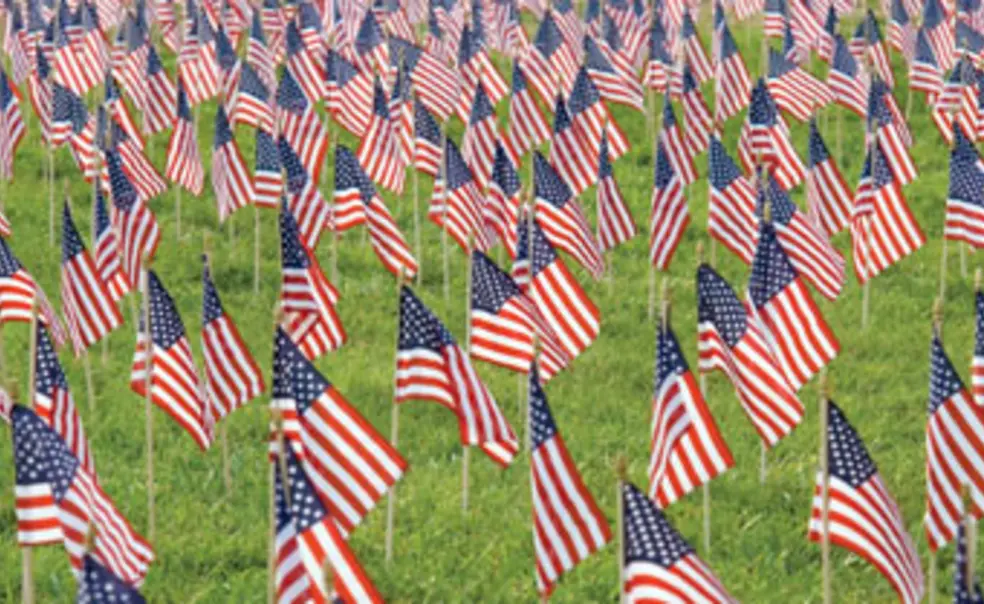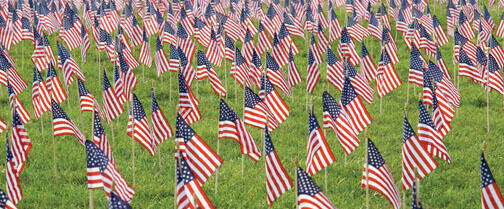On Veterans Day: Remembering
By Edgar M. Buttenheim ’44
My Princeton ROTC program and the courses I took later at Officer Candidate School did a good job of preparing me for most of my combat experiences as an artillery forward observer during World War II. What I never imagined was that at times I would be fighting a war in the midst of civilians who were trying to carry on their normal lives. Farmers did not plow on the rifle ranges at Fort Benning, Ga. Kindergarten classes did not stroll across artillery target areas at Fort Sill, Okla. Today some of my most vivid memories are of French citizens coping as we fought around them.
In August 1944, I was a 21-year-old second lieutenant of artillery with the 28th Infantry Division as it swept out of Normandy. When we approached Elbeuf, perhaps 50 miles from Paris, I was told that my artillery battalion would be part of a task force, including infantry and tanks, with the mission of liberating the city. “It is only a mopping-up operation” was the summary. I already had learned to dread the phrase, as my experience with the Germans thus far indicated they were firmly opposed to being mopped up. ...
Conditions seemed calm in the early morning of Aug. 26 as we left the warehouse, but at about 9 the Germans began firing medium artillery similar to our 155mm howitzers. We threw ourselves on the ground as the first barrage screamed in, and a shell hit 10 yards from us, wounding one of my artillerymen. Luckily, first-aid men quickly gathered several injured soldiers and drove them off in a jeep. I shall never forget my man, ashen-white, waving a feeble good-bye.
After the first explosions, I began to time the German rounds, which were coming in at three-minute intervals. One of our tanks was parked across the street, close to a stone wall, and I decided that getting between the tank and wall was the best available cover.
My remaining artilleryman and two infantrymen joined me behind the tank. My watch indicated we had 45 seconds until the next shelling. And then suddenly I saw them — two women coming down the street, escorting about 15 children perhaps 5 or 6 years old. Frightened by the first barrages, they must have decided to go to the nearest air-raid shelter, signs for which I had noticed about 150 yards back at an intersection. The children were in extreme danger and could not possibly reach the shelter or retrace their steps in time. I yelled, “Venez ici tout de suite” [Come here immediately], and the two teachers began to run toward me, scurrying behind the children like mother hens protecting their chicks. When the women and kids reached us, I told the men to pack all of them in, one on top of another and on top of us, forming a human pyramid. I heard the screams of approaching shells as we lifted the final child into place. There were four thunderous explosions, the middle two about 30 or 40 yards on either side of the tank. Razor-sharp shell fragments blanketed the street, but not a single person behind the tank was hurt.
By Grant K. Goodman ’46
In the following excerpt from his book, America’s Japan: The First Year, 1945–1946 (Fordham University Press), Grant K. Goodman ’46 recalls the experience of interrogating Japanese prisoners in the Philippines during World War II.
Even though the battle for the Philippines already had been won by the Americans, we still wanted information from the Japanese prisoners. ... The Japanese reinforcement troops sent to the Philippines were reservists who had not received very much training, but most of them had left Japan just a few months earlier, so if they were skillfully questioned, one could obtain the latest information about circumstances in Japan. ...
The place where we did the interrogation was a small wooden hut with an earthen floor, a dark room with almost no windows. The Japanese prisoners were brought into this dark room stark naked, then they suddenly would have a spotlight shone on them and the interrogation would begin from a place high above them. The interrogation desk must have been elevated some 10 feet above the floor.
I have no idea who came up with this stage design, but it was remarkably effective. All the prisoners had been fed propaganda to the effect that if they were captured by the Americans they would be killed, and when this was added to their weakened physical and mental condition, due to wandering exhausted and sick in the jungle, most of them gave up all resistance and answered the interrogation honestly.
They told us a lot of things — about how their homes had been destroyed in American air raids, about how many people had been killed, about how their homes had been burned down by fire, about their family members left behind in their native towns, about their wives and children, and so on.
We asked them what sort of movies were being shown currently in Tokyo. This was because we could make certain inferences about the living situation of ordinary people if we knew whether or not people were able to go to the movies. The answer, in most cases, was that it was possible to go. That is, it seemed that they enjoyed going to the movies, and they talked to us about the movies that they had seen. ...
By A.B. “Sandy” Smythe ’46
The following is from a précis for a memoir by Smythe, who died in 2001. It was submitted by his nephew, Milo B. Sampson ’62.
Early September [1944] brought me back to the Repple Depple [replacement depot], and I ended up in the wrong place with the 17th Armored Engineer Battalion of the Second Armored Division. This division was regular Army, mostly from Georgia and Mississippi. More than a few were illiterate, most had given up any hope of ever getting home, but few, except me, seemed to be scared of anything. They were as tough as the touted SS troops but never said so. Even the cooks worked hard and provided the best anyone could do with field rations. Everyone shaved every day and wore clean clothes. No excuses were ever accepted for any shortcoming, and officers were rarely seen, as each man knew his job after all the years together. I never was happier, even though I was just a private. Months later, Gen. Eisenhower made everyone in a combat unit a private first class, but there were no stripes available to sew on, so it was an empty gesture — except on pay day, when there was $4.50 more to one’s account.
By John T. Jameson ’50
I was a lead navigator in the 8th Air Force, 94th Bomb Group, 410 Squadron, located at Bury St. Edmunds, England. One of our last missions was to Berlin, a maximum effort for the 8th with 1,000 bombers. The date was April 18, 1945. We left the runway at Rougham Field at 8 a.m. and assembled at 6,000 feet. Heavy contrails were present over the initial point and target, with moderate to heavy accurate flak all along the bomb run. Just after dropping our six 1,000-pound bombs on a rail yard, we seemed to drop back out of formation. Our pilot, Dick Roberts, reported that our No. 1 engine was out. ... The top cylinder, we found out later, had been blown off.
We fell back from the formation after losing 2,000 feet. ... We made our way back from the rally point over Germany alone until a P-51 joined us and flew on our wing, telling Dick he would see us safely home — which he did. We landed an hour later than the rest of the formation. We had holes in both wings, and one main spar had to be replaced.
The war essentially was over in Europe some 12 days later, April 30, 1945. This was the day that Hitler committed suicide in his bunker in Berlin. And this was my 20th birthday! I had done all my fighting when I was 19 years old.
By Frank Bailey ’48
It is the year 1945. I am a private first class, assigned to the 2nd Platoon, E Company (“Easy” Company), 126th Battalion, 158th Regimental Combat Team (RCT), 32nd Infantry Division. The area is northern Luzon, Philippine Islands. It is just another day of patrolling, pushing the Japanese further back into the inhospitable mountains. ...
This morning, I am assigned as point man for this patrol. We set off on a trail leading we know not where, but no doubt toward the Japanese. After a few hours of walking and climbing, I am about to round another bend in the trail. ...
As I do, I suddenly see a Japanese infantryman in a foxhole with his rifle pointed at me. Being somewhat surprised that there is no rifle fire ... I keep walking up to the foxhole, my own rifle at the ready. It soon becomes apparent that the Japanese infantryman is sound asleep. I am somewhat dumbfounded as to what to do until the second man in the patrol puts one bullet into the sleeping Japanese and says, “I think we had better get out of here,” which we do.













No responses yet